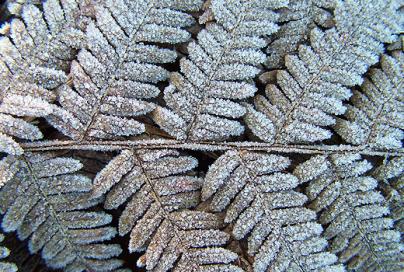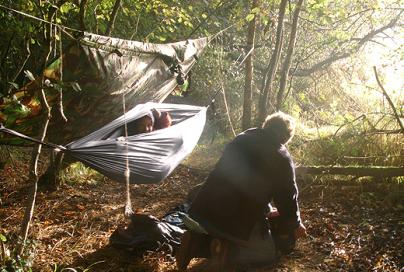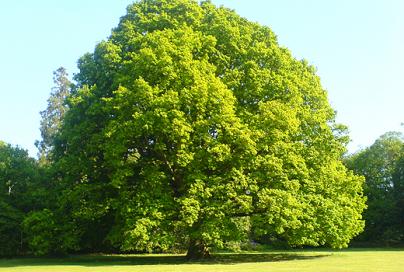Woodland Environment
All links to external website should open in a new window. Documents are either pdf or word and will open in an appropriate programme on your computer in a seperate window (you may have to exit your browser to see them). A box normally appears asking you permission to open or save the file. To read pdf files you will need adobe reader, which is free to download from the Adobe website here.
Do remember that the electronic workbooks & assignments are on the qualification & assessment infomation webpage
Species Identification
Being able to identify the flora (trees, plants, fungi etc) and animals (mammals, birds, invertebrates etc) present within your Forest School site is an essential skill for a Forest School Leader for several reasons:
Health and Safety - Some species may have the potential to cause us harm through poisoning, skin irritation etc. Knowing what is present helps us to plan and manage any risks.
Selecting Resources - The woodland is literally your 'resource cupboard', being able to recognise and understand the properties of different species will enable you to use them effectively to support learning.
Sustainable Management - Forest School is a balance of using the woodland and limiting our impact on it. Knowing and understanding the lifecycles of what is present will help us look after it for the long term.
Knowledge & Understanding - Nature is amazing! Getting to know the various species and their incredible lives is endless. Some of the bizarre facts and folklore might be a way to motivate your learners into wanting to discover more about the world we live in.
If identifying species is a new skill to you, here are a few tips:
Start with getting to know a handful of species. Pick some common species that you you already know and see if you can recognise them in other places and at different stages of growth. Then slowly add more to your skills one by one.
Focus on species present in your Forest School area, starting with the ones that are most abundant.
Make time to practice - Use it as an excuse to go out to the woods! Take time to notice the species you come across. Take out an ID chart/book that you are getting on with as it is easist to ID in the field rather than trying to do it from a photo.
If you are struggling to ID one particular individual tree/plant - see if there are other individuals of the same type nearby. Sometimes individuals may not grow in the characteristic manner described in books/guides - they are all unique!
Find a way to remember the species that suits you - take a note book and draw or paint them, take a sample and press it (plants not animals!!), make up a story, poem or rhyme about it - whatever works for you!
If you are still having difficulty identifying your find then you could try uploading a photo of it to the i-spot website. This website has an online community facility meaning that other users can see and comment on your photo, helping you to identify it. See the you tube video below and Chris Packham will explain how to use the site!
Suppliers of ID charts, books etc:
Field Studies Council Publications (webshop) - FSC publish the fold out keys on different species.
Tree Tools (website) - Part of the Woodland Trust's website that contains hundreds of different activity ideas and spotter sheets that are free to download.
Woodland Trust Swatch Booklets (webshop) - The woodland trust publish the pocket sized swatch booklets on trees, plants, butterflies and fungi.


Fancy practicing your mammal tracking? John Rhyder of Woodcraft School gives a great introduction in these videos!
FSTC Hand-outs:
Online Identification Keys:
iSpot's online keys (website) - Various online keys for minibeasts, trees, lichens etc.
A key for identifying trees and shrubs (website) - A very nice online key that will help you ID leafy shrub & tree species from either a leafy shoot or a winter twig with buds.
Find Wild Flowers (website) - Onlline key with photos and details of the plant species in a range of habitats.
RSPB Bird Identifier (website) - The RSPB website has a series of questions to help you identify the bird you saw. You can also search the database by name. As well as the usualu pictures and descriptions of species, you can also listen to an audio file of its call and look at video footage.
Websites with Species Information:
Royal Forestry Society (website) - A website with lots of information about trees.
Woodland Trust's British Tree Guide (website) - A website all about different tree species.
Buglife (website) - A charity dedicated to protecting bugs and other minibeasts!
Plantlife (website) - An organisation dedicated to protecting wild flowers and other plants.
The Mammal Society (website) - You can download factsheets of all british mammals from their website.
Surveys and Phenology (Recording Wildlife Events):
Natures Calendar (website) - The Woodland Trust has a website that you can record your sighting of seasonal wildlife events and contribute to a national collection of records.
Big Schools Birdwatch (website) - Every January/February the RSPB encourage schools to get involved with this national survey.
OPAL Surveys (website) - Take part in a variety of environmental surveys. You can get free resource packs to help you with these.a
Science and Plants for Schools (website) - Lots of activity idea for all ages
The video below explains a bit more about the 'edge effect' and how this is important for the horizontal structure of woodlands.
Lou explores the features of a 'Non-native, Coniferous Plantation' woodland type in this video:
And this one's about 'Natural Native Broadleaf' Woodland:
Woodland Ecology & Structure
Woodland Structure -
Countryside Info (website) - A website with a comprehensive introduction to British woodlands.
Environmental Impact Assessment -
Here is a short video explaining the process of Ecological Sucession:


Woodlands for Wellbeing
There is a growing body of research supporting the use of woodlands for physical and mental wellbeing. This can be useful to be aware of when explaining to others about the benefits of taking groups outside for Forest School.
The Wildlife Trusts have a few pieces of evidence about nature's affect on wellbeing on their website.
NHS Forest has a collection of resources and evidence supporting green spaces and health on their website.
Forestry England have a 'Forests for wellbeing' website which links to some research papers as well as give practical advice.
Forest Research is part of the Forestry Commission. You can search publications and research of all sorts of things connected to Forests and Forestry on their website.
Good from Woods was a funded project in the SW of England involving the University of Plymouth. It has a range of case studies and research tools on it's website.
The Conservation Volunteers (TCV) have research about their 'Green Gym' programmes on their website.
Broken links >
If you find any of the links to the documents above are not work properly, please let us know by typing in the name of the document in the form below.
Check out the other Student pages by clicking on the pictures:


